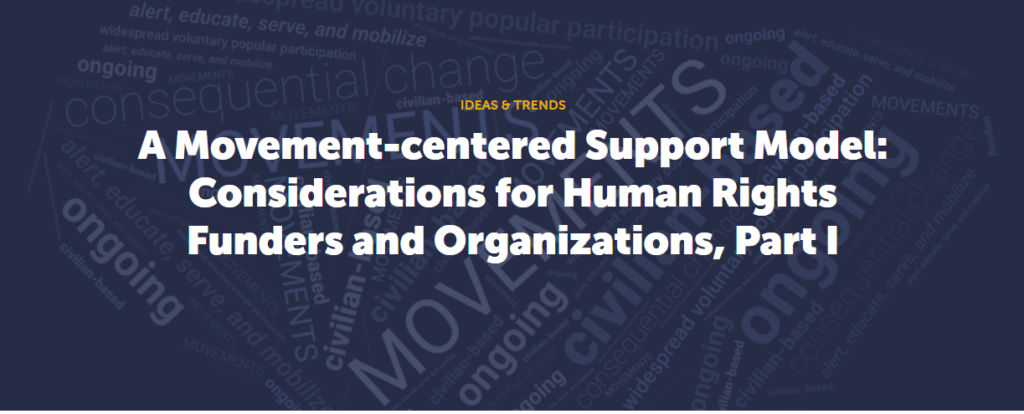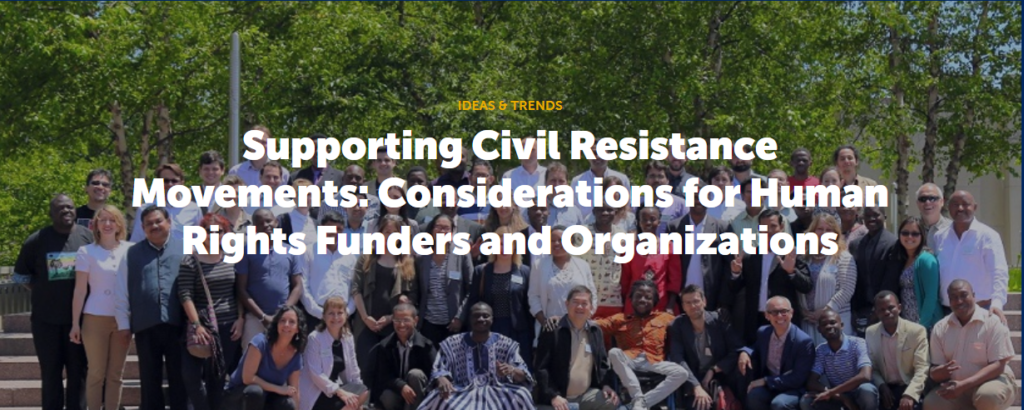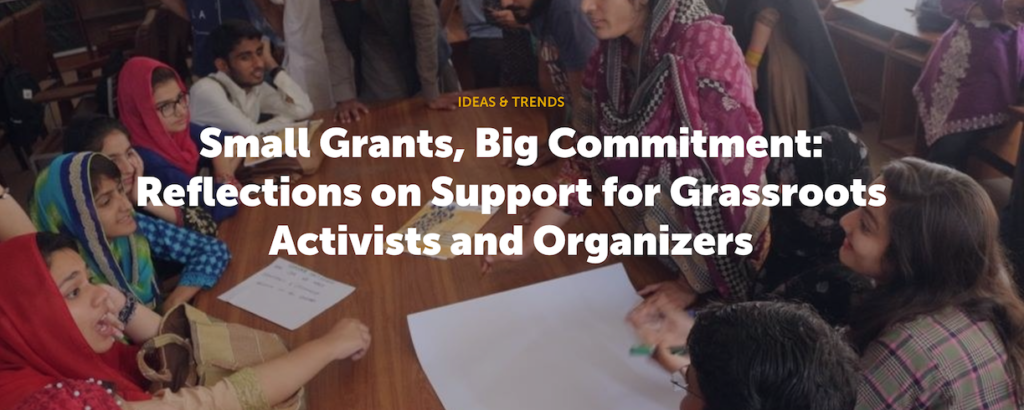What does a movement-centered support model look like?
In his three-part series for human rights funders and organizations, ICNC President Hardy Merriman defines the term “movement", focuses on civil resistance as a method by which movements create change, and offers insights on how organizations can support the development of educational infrastructure for activists and organizers.
Then in a subsequent blog post, Merriman uses an ICNC program as a case study of movement support and shares lessons learned.

By: Hardy Merriman
Defining What a Movement Is
There’s a growing effort among human rights funders and organizations to focus on supporting grassroots movements around the world. This trend is rooted in recognition that movements often play an essential role in making social, political, and economic change; that traditional models of funding and support are coming under greater pressure by governments; and that alternative models of change and support are needed. Read more...

By: Hardy Merriman
Defining Civil Resistance
In my previous blog post, I shared a definition of the term “movement” and discussed some distinguishing aspects of movements—such as how they are different from organizations, and the functions that they perform in a society.
This leads to the next question: how do movements make change? Read more...

By: Hardy Merriman
What makes civil resistance movements effective?
What makes civil resistance movements effective? If funders and human rights organizations can identify key factors that answer this question, then their efforts can be oriented towards supporting the development and growth of those factors. Read more...

By: Hardy Merriman
An increasing number of human rights foundations focus on supporting movements and the grassroots. Definitions of these terms may vary, as do approaches.
Amidst this backdrop, I want to share some lessons learned from ICNC's Learning Initiatives Network (LIN) and Activist Education Grants programs. Consider this one of many reference points in the growing conversation about the role of funders in these areas. Read more...

